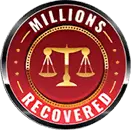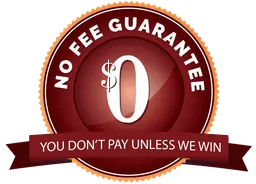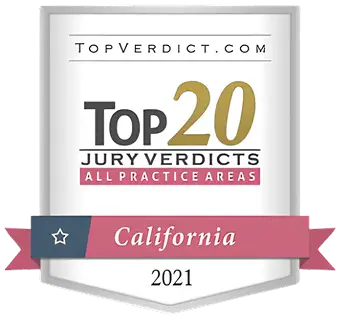With high volumes of vehicles moving at varying speeds, merging accidents can be a common occurrence across California’s congested highways and local roads. These incidents often happen in a matter of seconds, and assigning liability requires a thorough understanding of California traffic laws, driver behavior, and the specific circumstances of the collision.
Determining who is at fault in a merging accident can feel frustrating. If you’ve been involved in a merging car accident, knowing your rights and responsibilities can make a crucial difference in protecting your claim. Our team at Compass Law Group, LLP, has helped merging car accident victims fight for the compensation they deserve.
Our guide will go over what a merging accident is, California’s lane-change laws, and how victims can file a claim and earn their rightful compensation.
What Is a Merging Accident?
A merging accident occurs when one vehicle attempts to enter a new lane, typically onto a freeway, and collides with another vehicle already occupying that space.
These accidents are particularly common in:
- On-ramps and highway entrances
- Construction zones with lane closures
- City streets where turn lanes merge into through lanes
Unlike typical side-impact or rear-end collisions, merging accidents involve a unique timing component: who was already in the lane and who had the responsibility to yield. This is where it becomes tricky to figure out who is responsible for the accident.
Common Causes of Merging Accidents
Understanding what leads to a merging crash can help keep you safe on the road while also establishing liability in the event of a collision.
The most frequent causes include:
- Failing to Signal: Drivers who merge without using their turn signal give others on the road no warning of their intentions and no time to react.
- Speed Misjudgment: Entering traffic too slowly can cause rear-end collisions, while merging too quickly may cut off another vehicle.
- Not Checking Blind Spots: A frequent cause of merging side swipes is drivers not checking their vehicle’s blind spots before changing lanes, especially for larger vehicles with reduced visibility.
- Unsafe Lane Changes: Forcing a merge without sufficient space or cutting in at the last second can be dangerous.
- Road Design or Weather Issues: Curved ramps, faded lane markings, rain, or fog can all make merging more difficult and hazardous.
These behaviors often reflect negligence under California law, which is a key element in proving fault after an accident.
Who Has the Right-of-Way When Merging in California?
Right-of-way rules vary depending on the type of road and traffic situation. However, the general merging lane rules in California state that the vehicle already in the lane has the legal right-of-way.
According to California Vehicle Code (CVC) §21804, drivers entering a highway must yield to oncoming traffic until it is safe for them to merge. Similarly, CVC §22107 states that lane changes must be made safely with the appropriate signaling.
Drivers must follow these rules regardless of who is in a hurry or who flashes their lights. A failure to yield or to use turn signals could be considered negligence in a car accident claim.
When Is the Merging Driver at Fault?
In most cases, the merging driver is presumed to be at fault, especially when they fail to yield the right-of-way to vehicles already in the lane. California traffic law places the burden on the merging driver to enter traffic safely and predictably.
Common situations where the merging driver is often found to be at fault include:
- Failure to Yield: This can include merging into traffic too early or too aggressively.
- No Signal Used: If the merging driver does not indicate the lane change before moving over, they could be found at fault.
- Cutting Off Other Drivers: Forcing other vehicles to brake or swerve can put the merging driver at fault in the event of an accident.
- Speeding or Moving Too Slowly: Not matching the flow of traffic in the target lane increases the risk of a merging car accident.
These actions may violate the standard of care required on California roads and can form the basis for proving negligence in a personal injury claim.
Situations Where the Through Driver May Share Fault
Although the merging driver is usually at fault, there are cases where the driver already in the lane may be partially liable. California follows a pure comparative negligence rule, meaning fault can be shared between multiple parties, and their compensation can be reduced accordingly.
Some examples of instances where the through driver could be found partially responsible for the accident include:
- Aggressive Driving: This can look like speeding up to block a merge or refusing to let another car in.
- Brake-Checking: A driver abruptly slowing down in response to a merge attempt can make them partially liable in the event of an accident.
- Distracted Driving: A driver on their phone and not noticing a merging vehicle can lead to a serious merging car accident.
If both drivers acted negligently, liability could be split. For example, 70% of the fault could go to the merging driver, and 30% could go to the through driver. This percentage would impact any settlement or court award.
Merging Lane Rules in California
California’s traffic laws and road markings establish clear expectations for drivers using merging lanes. Failing to follow these guidelines can make a driver legally responsible for an accident.
Drivers must abide by California traffic laws and obey all road signs. This helps keep everyone on the road safe and reduces the risk of a serious car accident.
Examples of these merging lane rules in California include:
- Yield Signs: If a merging lane has a yield sign, the driver must wait for a safe opening.
- Solid Lines: Crossing a solid white line to merge is generally discouraged and may be unsafe.
- Dashed Lines: These dashed lines indicate where drivers are permitted to merge.
- End of Lane Indicators: When a lane ends, merging must be done smoothly and early, not at the last second.
How Fault Is Determined After a Merging Car Accident
Determining liability after a merging accident in California involves evaluating evidence, interviewing witnesses, and hiring the proper legal representation. With the proper evidence in hand, car accident victims can prove who is at fault for the accident and earn the compensation they deserve.
Here are some examples of evidence you and your legal team can gather to strengthen your legal claim:
- Police Reports
- Traffic Camera Footage
- Witness Statements
- Vehicle Damage Patterns
- Expert Testimonies
Filing a Personal Injury Claim After a Merging Accident
If you’ve been injured in a merging accident, filing a personal injury claim allows you to pursue compensation for your losses. In California, you can recover damages even if you were partially at fault, thanks to the state’s pure comparative negligence law.
Steps to File a Claim:
- Seek Medical Attention: Always get evaluated, even if your symptoms seem minor at first.
- Report the Accident: File a police report and notify your insurance company promptly.
- Gather Evidence: Collect photos, statements, medical records, and proof of missed work to help strengthen your case.
- Contact a Personal Injury Attorney: Legal guidance can ensure deadlines are met and your rights are protected.
To succeed in a personal injury claim, you must show that the other driver acted negligently. For example, say they failed to yield the right-of-way. You’ll also need to demonstrate that their negligence directly caused the accident and that you suffered measurable damages as a result, such as physical injuries, financial losses, or pain and suffering.
How an Auto Accident Lawyer Can Help You
Dealing with the aftermath of a merging car accident can feel overwhelming, especially when the legal paperwork starts to pile up. Working with a skilled and experienced car accident attorney can take some of the weight off your shoulders and make the process a little bit easier.
At Compass Law Group, LLP, we take care of the paperwork so you can focus on your recovery. When you work with our team of auto accident attorneys, we’ll take care of:
- Evidence Collection: Our lawyers can subpoena video footage, gather witness statements, and work with reconstruction experts.
- Insurance Negotiations: We handle all communications with insurance companies so you don’t have to. We know how to handle aggressive adjusters and push back against unfair fault assignments.
- Building Legal Strategy: We can help file your claim within California’s statute of limitations and ensure all damages are properly documented.
- Strategic Court Representation: If your case goes to trial, we will follow you into the courtroom and present the evidence, examine witnesses, and argue on your behalf.
If liability is unclear or split between multiple parties, legal guidance can help clear the air. The right lawyer can uncover details that prove the other driver was more responsible, maximizing your potential recovery.
Frequently Asked Questions
What should I do immediately after a merging accident?
If you find yourself in a merging car accident, move to safety, call 911, exchange contact information, and take photos of the scene. Be sure to seek medical care, even if you feel okay.
Can both drivers be found at fault in a merging car accident?
Yes. California’s comparative negligence law allows fault to be split between drivers based on their actions.
How long do I have to file a claim in California?
You generally have two years from the date of the accident to file a personal injury lawsuit.
Will my insurance rate go up if I’m partially at fault?
It’s possible. Even a small percentage of fault may lead to increased premiums, depending on your provider.
Protect Your Rights After a Merging Accident in California
Merging accidents can lead to serious injuries and property damage. If you’ve been injured due to another driver, understanding the law and who is at fault in a merging accident can make all the difference in how your case unfolds.
Whether the accident involved a truck driver or a motorcyclist, you need legal representation that will fight for your rights. A trusted personal injury lawyer at Compass Law Group, LLP, can investigate the accident, deal with insurance companies, and fight for the compensation you deserve.
Schedule a free consultation today and take the first step towards your recovery. When you work with us, you don’t pay us unless we win.




